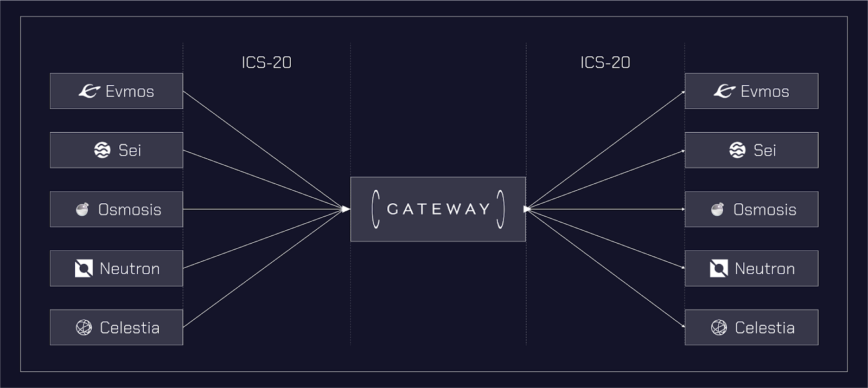Cross-Chain Interoperability Got Easier on Cosmos With Wormhole Gateway
Wormhole Gateway, a Cosmos SDK-powered application-specific blockchain, works to enhance the Cosmos ecosystem's liquidity and accessibility.

Share this article
In a recent move to enhance blockchain interoperability, the Wormhole Foundation unveiled Wormhole Gateway, a Cosmos SDK-powered blockchain. The new launch intends to increase liquidity and broaden access within the Cosmos ecosystem, easing the integration of assets from Ethereum, Solana and several other chains.
Introducing ✨✨Wormhole Gateway✨✨ – an application-specific blockchain, powered by the @cosmos SDK.
Gateway’s purpose is to help broaden access (and bring liquidity) to the Cosmos ecosystem while also improving Wormhole’s security and sovereignty. pic.twitter.com/qG1kyvcnoY
— Wormhole (@wormhole) July 21, 2023
There are two kinds of Wormhole Gateway users: “Cosmos developers who want to seamlessly onboard users and liquidity from other ecosystems like Ethereum and Solana, and users who want to bridge their assets to or from Cosmos.”
Gateway will enable all users to move bridge assets between Cosmos chains with ease. While interactions will not be directly with the chain interface, they run through the background technology during any cross-chain transfers.
The Gateway’s emphasis on transaction transparency and security is central, providing enhanced protection to Wormhole messages and improving Wormhole’s transparency and sovereignty.
The system works by allowing an entity to bridge a token to any Cosmos chain via the Gateway. The bridged asset is then locked, and a new ICS-20 is minted on Gateway, which is forwarded to the destination chain via Inter-Blockchain Communication (IBC).

The Wormhole Foundation’s choice to use the Cosmos SDK was to utilize IBC light clients for security, increase Wormhole’s transparency, and preserve its sovereignty. This includes utilizing modules like Governor and Global Accountant, which add further security and maintain fungibility of assets.
Furthermore, the Wormhole Gateway focuses on the seamless integration of Cosmos chains to other ecosystems, standing as a safe, efficient, and affordable on-ramp to the Cosmos ecosystem. The Gateway’s integration with the Cosmos ecosystem requires one simple IBC connection and doesn’t charge additional bridging fees for users, making it a more cost-effective option for users.
Gateway will have all of Wormhole’s 23+ connected blockchains across 6 runtimes be connected to @cosmos via one simple IBC integration. This will allow users to bridge funds to any Cosmos appchain with 0 additional bridging fees.
— Wormhole (@wormhole) July 21, 2023
